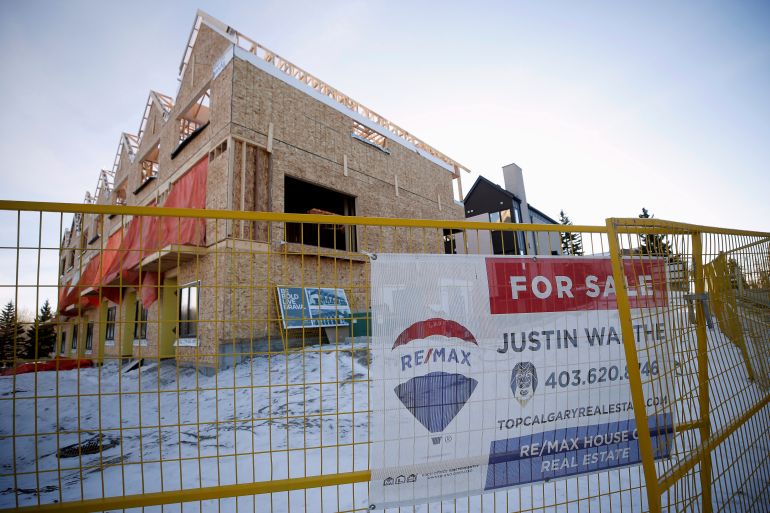Bank of Canada raises interest rate to highest in 22 years
The central bank had been on hold since January, but found excess demand in the economy was keeping inflation high.

The Bank of Canada on Wednesday hiked its overnight rate to a 22-year high of 4.75 percent, and markets and analysts immediately forecast yet another increase next month to ratchet down an overheating economy and stubbornly high inflation.
The central bank had been on hold since January to assess the impact of previous hikes after raising borrowing costs eight times since March 2022 to a 15-year high of 4.5 percent – the fastest tightening cycle in the bank’s history.
Keep reading
list of 4 itemsSwipe Right for Marriage: Dating apps for Muslims
Nova Kakhovka dam blast: Is Russia trying to freeze the war?
Paper City: Surviving the world’s deadliest air raid
Surprisingly strong consumer spending, a rebound in demand for services, a pick-up in housing activity and a tight labour market show that excess demand in the economy is more persistent than anticipated, the central bank said in a statement.
Noting an uptick in inflation in April and the fact that three-month measures of core inflation remained stubbornly high, the Bank of Canada (BoC) said, “Concerns have increased that CPI [consumer price index] inflation could get stuck materially above the 2% target.”
Given this backdrop, the governing council determined that “monetary policy was not sufficiently restrictive to bring supply and demand back into balance and return inflation sustainably to the 2% target.”
Money markets see more than a 60 percent chance of another rate hike in July and have fully priced in further tightening by September.
“We expect another 25 basis points coming in July,” said Derek Holt, vice president of capital markets economics at Scotiabank. “It is like a bag of chips: you open one and just can’t have one.”
The last time the rate hit 4.75 percent was in April and May 2001.
The BoC has no press conference scheduled on Wednesday, but Deputy Governor Paul Beaudry will speak and field questions from the media in British Columbia on Thursday.
Financial crisis or soft landing?
The leader of Canada’s main opposition Conservative Party, Pierre Poilievre, spoke to his parliamentary caucus. He blamed Liberal Prime Minister Justin Trudeau for driving inflation with deficit spending and taking the country toward “a full-scale financial crisis”.
However, Canada’s Finance Minister Chrystia Freeland said the economic rebound from the COVID-19 pandemic and Russia’s invasion of Ukraine has been stoking price increases.
No country is “better positioned for a soft landing than Canada”, she told reporters, adding “we are very close to the end of this difficult time and to return to low, stable inflation and strong, steady growth”.
Both money markets and analysts had seen a chance for a rate increase, but many thought one was more likely at the next meeting in July. About two-thirds of economists polled by Reuters last week expected the central bank to keep rates on hold through the end of 2023.
In April, annual inflation accelerated for the first time in 10 months to 4.4 percent. First-quarter gross domestic product (GDP) rose 3.1 percent – versus the 2.3 percent forecast by the BoC – and in April the economy is seen expanding 0.2 percent.
“The Canadian economy has shown remarkable resilience through 2023,” said Andrew Kelvin, chief Canada strategist at TD Securities, who also sees another hike in July. “To bring demand lower, which is the bank’s goal to achieve their 2 percent inflation target, we just simply need more tightening.”
The BoC said it would continue to assess economic indicators going forward to see if they “are consistent with achieving the inflation target”.
But it dropped language that was in the previous policy statement from April saying it “remains prepared to raise the policy rate further” to get inflation to target, leaving its next possible move more open-ended.
The BoC said it still saw inflation slowing to 3 percent this summer, but it did not reiterate that it would slowly come down to its 2 percent target by the end of next year as it did when it made its last forecasts in April.